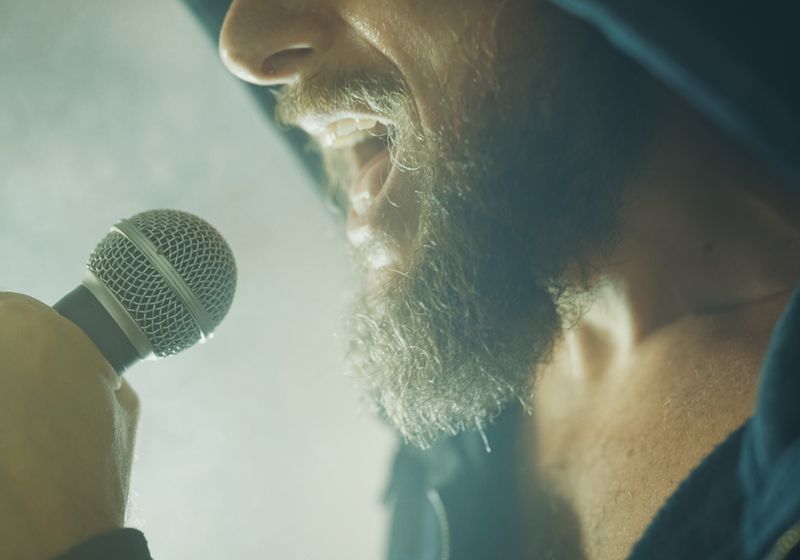Metal vocalists restructure their vocal tract to produce their unique screams and avoid damage to their voice organs.
In the world of metal music, vocal distortions, such as screams, are a core component of the genre. Yet most vocalists can’t explain how they produce these intense sounds.
Amanda Stark, a clinical speech-language pathologist at the University of Utah, studies what’s happening inside these singers’ throats. Her work can not only provide support for metal professionals and guides for vocal coaches but can also help individuals suffering from vocal disorders.
The Structure of a Metal Scream
The project started when Elizabth Zharoff, a former participant in a summer training program at with Stark and host of the YouTube Channel The Charismatic Voice, contacted her about harsh vocal techniques. Zharoff was working with Will Ramos, the front man for the deathcore metal band Lorna Shore, for vocal coaching. Although not familiar with metal music at the time, Stark took on the challenge to study these distortions and soon after brought Ramos into her vocal laboratory.
Not knowing what to expect, Stark inserted a laryngeal scope down Ramos’s throat and asked him to create one of his signature screams so that she could watch how his vocal tract formed the sound. Instead of the typical synchronization that normal speech and singing creates with the vocal folds, in which the two muscle bands meet in the middle to produce vibrations, Stark saw that Ramos’s vocal tract pulled to one side in an asymmetrical structure. She recalled feeling her eyes bulging out of her head. “I had just never seen a vocal tract do that.”
The moment hooked Stark onto exploring how Ramos formed these unique sounds in a pilot study. Combining laryngeal scoping, laryngeal electromyography, and magnetic resonance imaging, she and her team found that Ramos uses muscles in his neck and the rest of his body to help pull his vocal tract to the right to create the harsh vocals. This asymmetry was also important to constrict part of the vocal tract to balance the pressure that Ramos’s screams produced from his lungs.
Scream Contortion Saves the Vocal Tract
Now a self-described metalhead, Stark said that this first study “spearheaded this next phase of research.” She, Zharoff, and Ramos launched a Kickstarter campaign to expand the research to include other vocalists across metal genres. Stark’s goal was to attempt to find common features between the artists’ vocal techniques and their screams.
However, she’s found a huge amount of variation. “Every single one of [the metal vocalists] has a different style, a different way in which they shape their sounds, which is really exciting.”
Yet there are some shared characteristics. “A lot of the exciting, cool stuff is really happening within the mouth.” Stark explained that many of the vocalists position and shape their tongues to help create their sounds.
“People that are doing extreme metal vocals, I think of them as like contortionists, like they can structure their vocal tract, their airway, muscles, ligaments in the most unique way I’ve seen,” Stark said.
Beyond producing their unique sounds, this contortion may also help protect singers’ vocal folds. Oftentimes, metal singers who use harsh vocals are told that they will “shred” their vocal tract. “We don’t see that. And now that I’ve seen several more of these artists, I can very confidently say their vocal folds tend to be really healthy and not any different from any other singer or any other speaker that we clinically have represented,” Stark said.
She said that the absence of damage is likely because the vocal folds are not vibrating in the same way that they do with other genres of singing. “These distortions are not causing collisions,” Stark said, adding that it is likely due to the way that the singers structure their vocal tract. With this, she said, “What they are experiencing though, and I think should be put out there, is this is hard on their bodies.”
Lessons from the Stage to the Clinic
One of Stark’s goals for the project was to identify how metal vocal performers created their unique sounds so that vocal coaches and other specialists could provide them with the best of care. Additionally, voice instructors could use Stark’s findings to help better teach students interested in learning screaming techniques how to do so safely.
Stark also saw that the artists themselves appreciated learning how they created their sounds. She added that it also formed a sense of camaraderie amongst the performers. “When we were in the room filming these videos, the artists were going back and forth with each other kind of talking about like, ‘Dude, you got to teach me how to do that.’ And then the other artists would be like, ‘Yeah, well, now that I know what I’m doing, I can’,” she said.
Beyond singing, though, Stark said that understanding how professional vocalists create these sounds without their vocal folds can help guide treatment options for individuals who have had their folds damaged or removed or have other vocal disorders. “If [metal vocalists] can find a way to reorganize this system, that means someone who has a different type of disorder may be able to as well,” Stark said.

